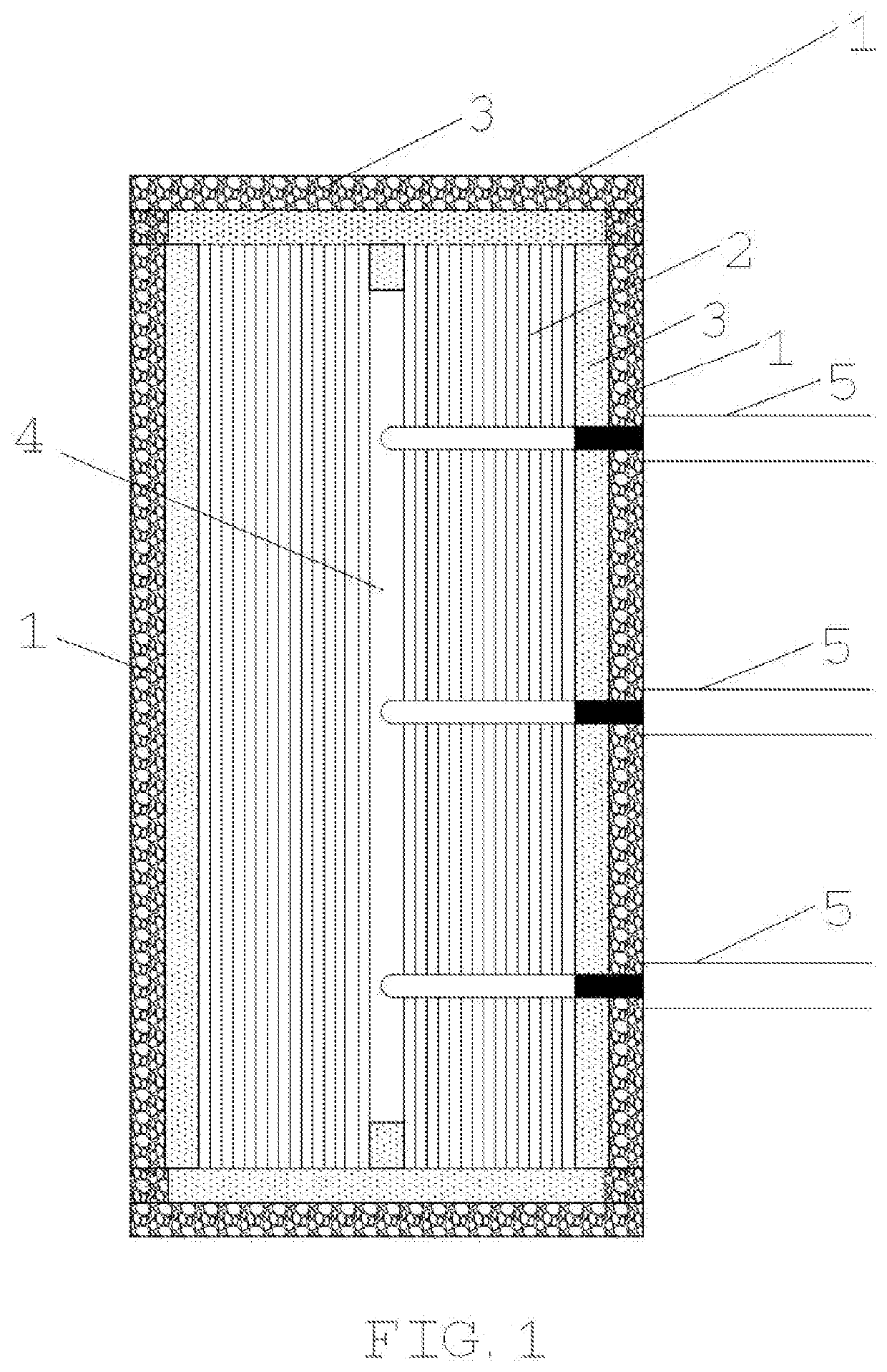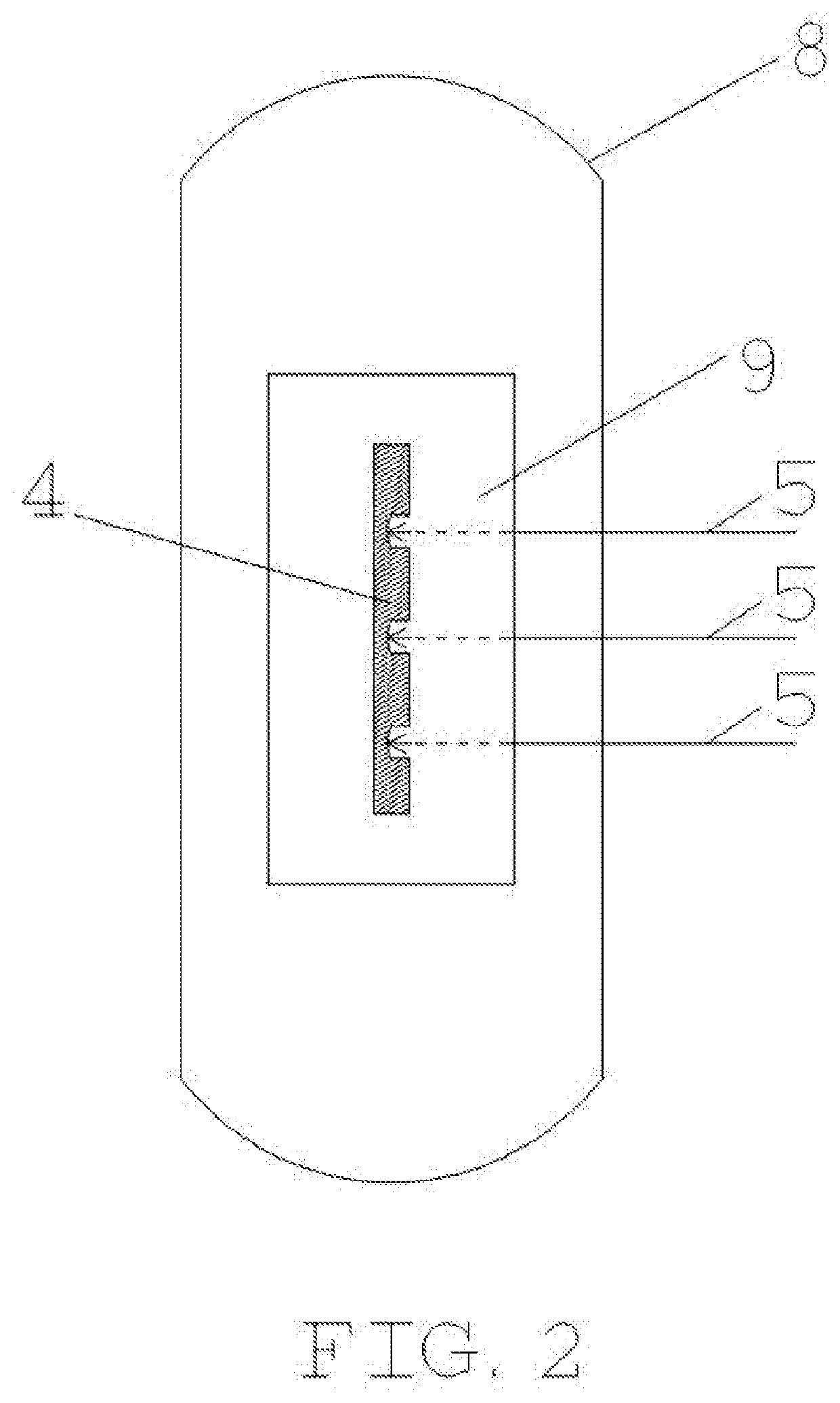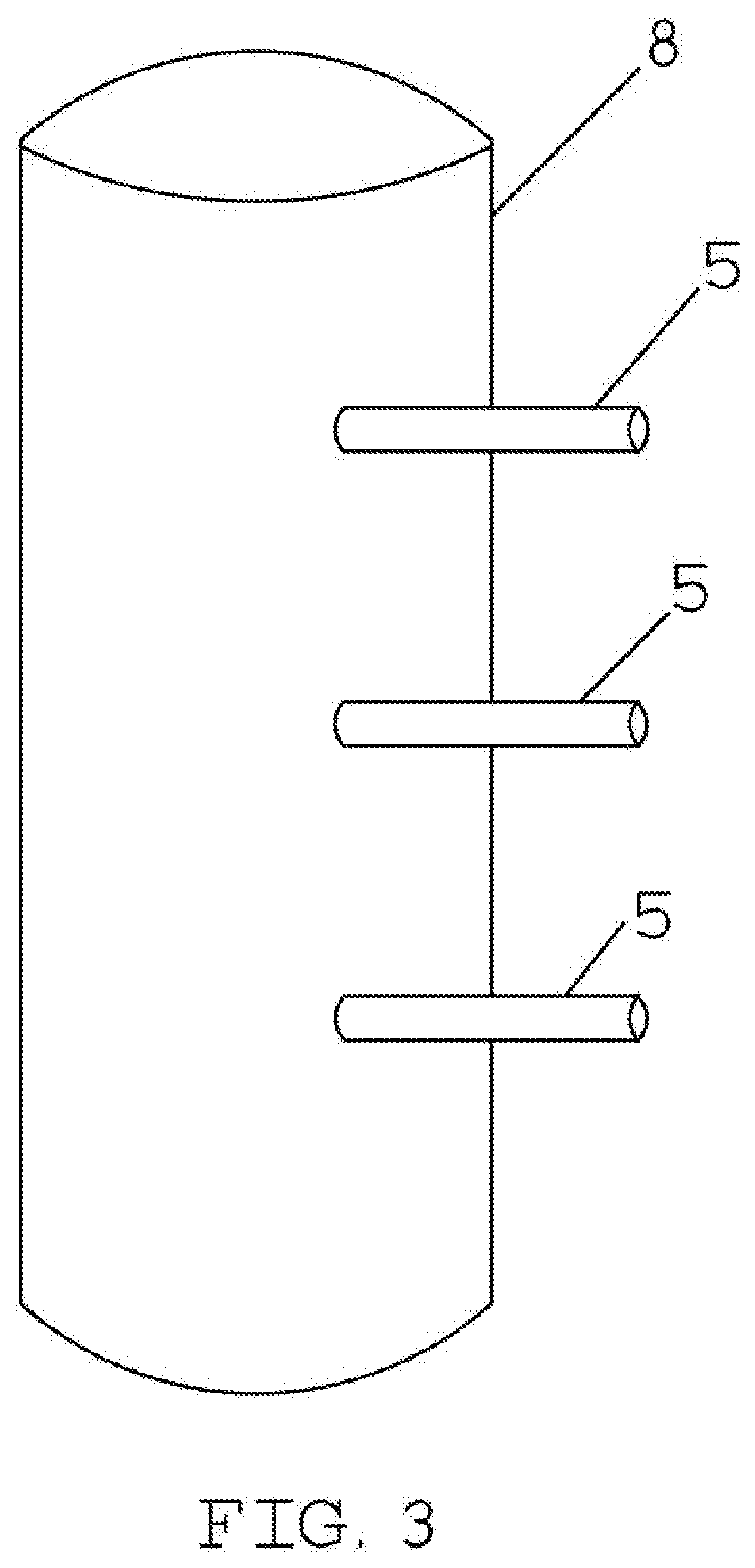Utilizing Multiple Proton Injection Ports in Accelerator Driven Subcritical Reactor for Direct Adopting Spent Fuels from Light Water Reactors
a technology of subcritical reactors and proton injection ports, which is applied in the direction of nuclear reactors, reactor fuel susbtances, greenhouse gas reduction, etc., can solve the problems of not having a sound, practical and effective method to handle spent fuels, and neither the permanent solution to address nuclear waste, and the two strategies currently suffer significant drawbacks politically, technically, and economically. , to achieve the effect of enhancing the effectiveness of fission rate and easing the storage problem of spent fuel
- Summary
- Abstract
- Description
- Claims
- Application Information
AI Technical Summary
Benefits of technology
Problems solved by technology
Method used
Image
Examples
embodiment 1
[0125]Three sideway proton intake ports 5 are connected to an accelerator driven subcritical reactor and deliver protons into the core to collide with the target 4 placed in the center of the ADS reactor core. The vertical cross section side view for this arrangement is presented in FIG. 1. In this figure, it shows the ADS core includes spent fuels 2 taken from light water reactors, and an external layer of reflector materials 3. Another layer outward along the radial direction is the shielding material 1.
[0126]FIG. 2 shows the reactor vessel 8 of the accelerator driven subcritical core 9 with three sideway proton intake ports, each port 5 delivers protons from one or more accelerators. The protons are delivered to the ADS core 9 to collide with the spallation targets 4 for producing neutrons.
[0127]FIG. 3 shows that the three sideway proton intake ports 5 are connected to and penetrate through the reactor vessel wall 8.
embodiment 2
[0128]Embodiment 2 is a design of a target of two spallation locations for receiving two protons streams, one from the top of the reactor and the other from the bottom of the reactor.
[0129]FIG. 4 shows the vertical cross-sectional view for half of the ADS core. Two proton intake ports 10 are connected to the ADS core, one port 10 delivers protons from top of the reactor, and the other from bottom of the core. The spallation target 15, the fuels 2, reflector 3, and the shielding 1 are shown in the figure.
[0130]FIG. 5 shows the vertical cross-sectional view for the ADS core with fuel elements and two proton intake ports 10. One proton port enters the reactor from the top of the core and the other enters from the bottom of the core.
[0131]FIG. 6 shows a 3D view of the ADS core, with fuel elements 2 and two two-way proton intake ports 10.
[0132]FIG. 7 shows a reactor vessel that houses the ADS core with two proton intake ports connected to the core, one from top, and the other from bottom...
embodiment 3
[0133]FIG. 8 shows one proton intake port, entering the core from top of the vessel for delivering protons to the core. The target is specifically designed to have a Step Down shape to accommodate two proton streams for colliding with the target at two different axial locations along the center axis of the core such that there will be two neutron sources located strategically for maximizing the effectiveness of nuclear reactions.
[0134]A modulation unit in the intake port on top of the vessel could deliver protons for the two proton streams at different energies and fluxes. This arrangement could make the neutrons generated at the two target locations with different energies and quantities. The modulation unit 20 on top of the vessel that would have magnet arrangements inside to perform the functions of bending the proton flow direction from horizontal to downward as well as splitting the proton flows to two proton steams of different energies and fluxes.
PUM
 Login to View More
Login to View More Abstract
Description
Claims
Application Information
 Login to View More
Login to View More - R&D
- Intellectual Property
- Life Sciences
- Materials
- Tech Scout
- Unparalleled Data Quality
- Higher Quality Content
- 60% Fewer Hallucinations
Browse by: Latest US Patents, China's latest patents, Technical Efficacy Thesaurus, Application Domain, Technology Topic, Popular Technical Reports.
© 2025 PatSnap. All rights reserved.Legal|Privacy policy|Modern Slavery Act Transparency Statement|Sitemap|About US| Contact US: help@patsnap.com



